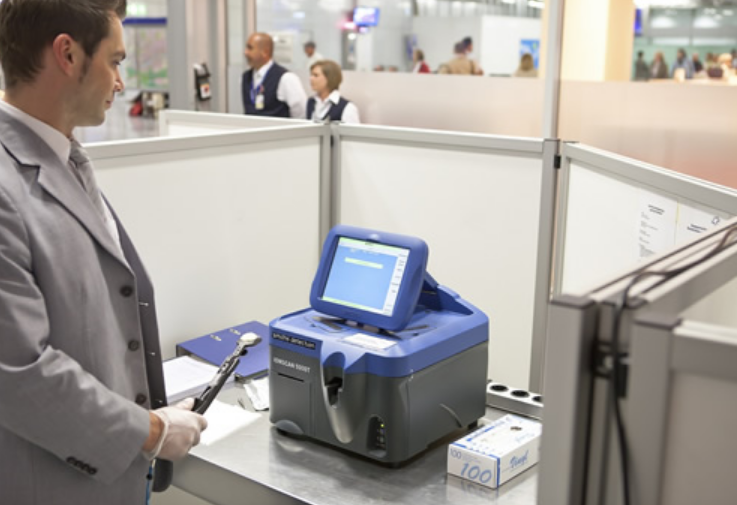How an Explosives Trace Detection System Enhances Airport Security Checks
Introduction
Airports are among the most sensitive and high-risk infrastructures in the world, constantly facing threats from terrorism, smuggling, and other illicit activities. Ensuring passenger safety and protecting aviation assets requires a multi-layered security strategy. Among the critical tools used today is the explosives trace detection system, a technology designed to detect minute traces of explosives on luggage, cargo, and even passengers. This article explores how such systems play a pivotal role in airport security, how AI is transforming their capabilities, and what travelers and industry professionals should know.
Understanding Explosives Trace Detection Systems
An explosives trace detection system (ETD) is a security device designed to detect explosive compounds at trace levels. These systems are capable of identifying residues from military-grade explosives, homemade explosives (HMEs), and commercial variants. ETDs typically function by analyzing swabs taken from surfaces like baggage, clothing, or hands, often using ion mobility spectrometry (IMS), colorimetric sensors, or nanotechnology-based thermal analysis.
By providing real-time results within seconds, these systems allow security personnel to quickly isolate threats without significantly slowing down airport operations.
The Importance of ETDs in Airport Security
1. Detection at the Microscopic Level
Explosives don’t need to be present in large quantities to pose a threat. Even trace particles, transferred through contact or packaging, can signal the presence of dangerous substances. ETDs are capable of identifying particles as small as a few nanograms, allowing for preemptive action before any physical threat becomes active.
2. Non-Invasive and Efficient
Unlike X-ray scanners or full-body searches, ETDs offer a discreet, non-invasive solution. Passengers or baggage are simply swabbed, and within seconds, a clear pass/fail signal is provided. This approach reduces friction in passenger movement while maintaining a high standard of security.
3. Adaptability to Multiple Threat Scenarios
Modern threats are not always confined to checked baggage. Carry-ons, personal electronics, and even clothing can be used as vectors. ETDs are designed to screen a wide range of surfaces, materials, and environmental conditions, making them ideal for the fast-paced airport setting.
AI’s Role in Enhancing Detection Accuracy
Artificial Intelligence (AI) is revolutionizing every sector of security, and ETDs are no exception. From improving detection algorithms to reducing false alarms, AI is transforming how these systems operate. Advanced software now enables adaptive learning models that adjust for humidity, temperature, and material type—factors that previously caused detection errors.
One noteworthy advancement is the integration of AI in interpreting scan results, helping operators differentiate between threat signals and harmless materials more efficiently. This reduces downtime and improves passenger flow through security checkpoints.
For a deeper look into how AI is reshaping public safety systems, including airport screening technologies, check out Harnessing AI for Traffic Regulation, which highlights the broader impact of intelligent automation in real-world applications.
See also: Top 20 FoodTech Software Development Companies in 2025
Where ETDs Fit in the Airport Security Ecosystem
While full-body scanners and under-vehicle surveillance systems handle broader threats, explosives trace detection systems provide a granular level of defense. Their role is to catch what other systems might miss—minute residues and subtle chemical markers that don’t show up on an X-ray or camera feed.
ETDs are typically used at:
- Security checkpoints for both passengers and carry-ons
- Baggage handling areas for checked-in luggage
- Cargo facilities where goods are inspected before loading
- Sensitive access points like cockpit doors, server rooms, or control centers
This layered approach ensures that any overlooked threats are intercepted through redundancy and specialization.
The Regulatory Push and Global Adoption
Regulatory bodies like the Transportation Security Administration (TSA) in the United States, the European Civil Aviation Conference (ECAC), and India’s Bureau of Civil Aviation Security (BCAS) have made ETDs a mandatory component of airport screening. This has led to widespread adoption, with governments investing heavily in next-generation trace detection systems.
The global demand for ETDs has further increased due to heightened threats and the need for proactive security strategies, especially in countries with major international hubs.
Top 5 Companies Providing Explosives Trace Detection System Services
Several global players are leading the development and deployment of cutting-edge ETDs. While many regional providers exist, the following are recognized internationally for their contributions:
- Smiths Detection– Known for their IonScan series, widely used in airports across Europe and the U.S.
- FLIR Systems – Offers handheld and desktop-based ETDs with strong AI integration.
- Vehant Technologies – An emerging leader offering indigenous ETD solutions integrated with real-time analytics and AI, particularly suited for critical infrastructure and border security.
- Bruker Corporation– Focuses on high-sensitivity detection technologies for defense and aviation.
- Nuctech Company Limited – Supplies security inspection solutions, including ETDs, to international airports.
These companies continue to innovate in terms of accuracy, portability, and AI-driven automation.
Conclusion
As aviation security faces increasingly complex challenges, explosives trace detection systems have become an indispensable layer in airport defenses. With the ability to detect minute traces of explosive materials swiftly and accurately, these systems significantly enhance passenger safety and operational confidence. The ongoing integration of AI and smart analytics is only expanding their potential. As regulatory demands grow and technologies evolve, ETDs will continue to be a cornerstone of modern airport security infrastructure.







